.
Chemistry is a branch of physical science that studies the composition, structure, properties and change of matter.[1][2] In this realm, chemistry deals with such topics as the properties of individual atoms, the manner in which atoms form chemical bonds in the formation of compounds, the interactions of substances throughintermolecular forces to give matter its general properties, and the interactions between substances through chemical reactions to form different substances.
Chemistry is sometimes called the central science because it bridges other natural sciences like physics, geology and biology.[3][4] Chemistry is a branch of physical science but distinct from physics.[5]
The etymology of the word chemistry has been much disputed. The history of chemistry can be traced to certain practices, known as alchemy, which had been practiced for several millennia in various parts of the world.
Etymology
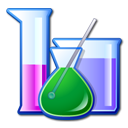 |
| Chemistry |
|---|
The word chemistry comes from the word alchemy, an earlier set of practices that encompassed elements of chemistry, metallurgy, philosophy, astrology, astronomy, mysticism and medicine; it is commonly thought of[by whom?] as the quest to turn lead or another common starting material into gold.[6] Alchemy, which was practiced around 330, is the study of the composition of waters, movement, growth, embodying, disembodying, drawing the spirits from bodies and bonding the spirits within bodies (Zosimos).[7] An alchemist was called a 'chemist' in popular speech, and later the suffix "-ry" was added to this to describe the art of the chemist as "chemistry".
The word alchemy in turn is derived from the Arabic word al-kīmīā (الکیمیاء). In origin, the term is borrowed from the Greek χημία or χημεία.[8][9] This may have Egyptian origins. Many[quantify] believe that al-kīmīā is derived from the Greek χημία, which is in turn derived from the word Chemi or Kimi, which is the ancient name of Egypt in Egyptian.[8] Alternately, al-kīmīā may derive from χημεία, meaning "cast together".[10]
Definition
In retrospect, the definition of chemistry has changed over time, as new discoveries and theories add to the functionality of the science. The term "chymistry", in the view of noted scientist Robert Boyle in 1661, meant the subject of the material principles of mixed bodies.[11] In 1663 the chemist Christopher Glaser described "chymistry" as a scientific art, by which one learns to dissolve bodies, and draw from them the different substances on their composition, and how to unite them again, and exalt them to a higher perfection.[12]
The 1730 definition of the word "chemistry", as used by Georg Ernst Stahl, meant the art of resolving mixed, compound, or aggregate bodies into their principles; and of composing such bodies from those principles.[13] In 1837, Jean-Baptiste Dumas considered the word "chemistry" to refer to the science concerned with the laws and effects of molecular forces.[14]This definition further evolved until, in 1947, it came to mean the science of substances: their structure, their properties, and the reactions that change them into other substances - a characterization accepted by Linus Pauling.[15] More recently, in 1998, Professor Raymond Chang broadened the definition of "chemistry" to mean the study of matter and the changes it undergoes.[16]
History
Main article: History of chemistry
See also: Alchemy and Timeline of chemistry
Early civilizations, such as the Egyptians[17] Babylonians, Indians[18] amassed practical knowledge concerning the arts of metallurgy, pottery and dyes, but didn't develop a systematic theory.
A basic chemical hypothesis first emerged in Classical Greece with the theory of four elements as propounded definitively by Aristotle stating that that fire, air, earth andwater were the fundamental elements from which everything is formed as a combination. Greek atomism dates back to 440 BC, arising in works by philosophers such as Democritus and Epicurus. In 50 BC, the Roman philosopher Lucretiusexpanded upon the theory in his book De rerum natura (On The Nature of Things).[19][20] Unlike modern concepts of science, Greek atomism was purely philosophical in nature, with little concern for empirical observations and no concern for chemical experiments.[21]
In the Hellenistic world the art of alchemy first proliferated, mingling magic and occultism into the study of natural substances with the ultimate goal of transmuting elements into gold and discovering the elixir of eternal life.[22] Alchemy was discovered and practised widely throughout the Arab world after the Muslim conquests,[23] and from there, diffused into medieval and Renaissance Europe through Latin translations.[24]
Chemistry as science
Under the influence of the new empirical methods propounded by Sir Francis Bacon and others, a group of chemists atOxford, Robert Boyle, Robert Hooke and John Mayow began to reshape the old alchemical traditions into a scientific discipline. Boyle in particular is regarded as the founding father of chemistry due to his most important work, the classic chemistry text The Sceptical Chymist where the differentiation is made between the claims of alchemy and the empirical scientific discoveries of the new chemistry.[25] He formulated Boyle's law, rejected the classical "four elements" and proposed a mechanistic alternative of atoms and chemical reactions that could be subject to rigorous experiment.[26]
The theory of phlogiston (a substance at the root of all combustion) was propounded by the German Georg Ernst Stahl in the early 18th century and was only overturned by the end of the century by the French chemist Antoine Lavoisier, the chemical analogue of Newton in physics; who did more than any other to establish the new science on proper theoretical footing, by elucidating the principle of conservation of mass and developing a new system of chemical nomenclature used to this day.[28]
Prior to his work, though, many important discoveries had been made, specifically relating to the nature of 'air' which was discovered to be composed of many different gases. The Scottish chemist Joseph Black (the first experimental chemist) and the Dutchman J. B. van Helmont discovered carbon dioxide, or what Black called 'fixed air' in 1754; Henry Cavendish discovered hydrogen and elucidated its properties andJoseph Priestley and, independently, Carl Wilhelm Scheele isolated pure oxygen.
English scientist John Dalton proposed the modern theory of atoms; that all substances are composed of indivisible 'atoms' of matter and that different atoms have varying atomic weights.
The development of the electrochemical theory of chemical combinations occurred in the early 19th century as the result of the work of two scientists in particular, J. J. Berzelius and Humphry Davy, made possible by the prior invention of the voltaic pile by Alessandro Volta. Davy discovered nine new elements including the alkali metals by extracting them from their oxides with electric current.[29]
British William Prout first proposed ordering all the elements by their atomic weight as all atoms had a weight that was an exact multiple of the atomic weight of hydrogen. J. A. R. Newlands devised an early table of elements, which was then developed into the modern periodic table of elements[30] by the German Julius Lothar Meyer and the Russian Dmitri Mendeleev in the 1860s.[31] The inert gases, later called the noble gases were discovered by William Ramsay in collaboration with Lord Rayleigh at the end of the century, thereby filling in the basic structure of the table.
Organic chemistry was developed by Justus von Liebig and others, following Friedrich Wöhler's synthesis of urea which proved that living organisms were, in theory, reducible to chemistry.[32] Other crucial 19th century advances were; an understanding of valence bonding (Edward Frankland in 1852) and the application of thermodynamics to chemistry (J. W. Gibbs and Svante Arrhenius in the 1870s).
Chemical structure
At the turn of the twentieth century the theoretical underpinnings of chemistry were finally understood due to a series of remarkable discoveries that succeeded in probing and discovering the very nature of the internal structure of atoms. In 1897, J. J. Thomson ofCambridge University discovered the electron and soon after the French scientist Becquerelas well as the couple Pierre and Marie Curie investigated the phenomenon of radioactivity. In a series of pioneering scattering experiments Ernest Rutherford at the University of Manchester discovered the internal structure of the atom and the existence of the proton, classified and explained the different types of radioactivity and successfully transmuted the first element by bombarding nitrogen with alpha particles.
His work on atomic structure was improved on by his students, the Danish physicist Niels Bohr and Henry Moseley. The electronic theory of chemical bonds and molecular orbitalswas developed by the American scientists Linus Pauling and Gilbert N. Lewis.
The year 2011 was declared by the United Nations as the International Year of Chemistry.[33] It was an initiative of the International Union of Pure and Applied Chemistry, and of the United Nations Educational, Scientific, and Cultural Organization and involves chemical societies, academics, and institutions worldwide and relied on individual initiatives to organize local and regional activities.
Principles of modern chemistry
The current model of atomic structure is the quantum mechanical model.[34]Traditional chemistry starts with the study of elementary particles, atoms,molecules,[35] substances, metals, crystals and other aggregates of matter. This matter can be studied in solid, liquid, or gas states, in isolation or in combination. The interactions, reactions and transformations that are studied in chemistry are usually the result of interactions between atoms, leading to rearrangements of the chemical bonds which hold atoms together. Such behaviors are studied in a chemistry laboratory.
The chemistry laboratory stereotypically uses various forms of laboratory glassware. However glassware is not central to chemistry, and a great deal of experimental (as well as applied/industrial) chemistry is done without it.
A chemical reaction is a transformation of some substances into one or more different substances.[36] The basis of such a chemical transformation is the rearrangement of electrons in the chemical bonds between atoms. It can be symbolically depicted through a chemical equation, which usually involves atoms as subjects. The number of atoms on the left and the right in the equation for a chemical transformation is equal. (When the number of atoms on either side is unequal, the transformation is referred to as a nuclear reaction or radioactive decay.) The type of chemical reactions a substance may undergo and the energy changes that may accompany it are constrained by certain basic rules, known as chemical laws.
Energy and entropy considerations are invariably important in almost all chemical studies. Chemical substances are classified in terms of their structure, phase, as well as their chemical compositions. They can be analyzed using the tools ofchemical analysis, e.g. spectroscopy and chromatography. Scientists engaged in chemical research are known aschemists.[37] Most chemists specialize in one or more sub-disciplines. Several concepts are essential for the study of chemistry; some of them are:[38]
Matter
Main article: Matter
In chemistry, matter is defined as anything that has rest mass and volume (it takes up space) and is made up of particles. The particles that make up matter have rest mass as well - not all particles have rest mass, such as the photon. Matter can be a pure chemical substance or a mixture of substances.[39]
Atom
 The atom is the basic unit of chemistry. It consists of a dense core called the atomic nucleussurrounded by a space called the electron cloud. The nucleus is made up of positively charged protons and uncharged neutrons (together called nucleons), while the electron cloud consists of negatively charged electrons which orbit the nucleus. In a neutral atom, the negatively charged electrons balance out the positive charge of the protons. The nucleus is dense; the mass of a nucleon is 1,836 times that of an electron, yet the radius of an atom is about 10,000 times that of its nucleus.[40][41]
The atom is the basic unit of chemistry. It consists of a dense core called the atomic nucleussurrounded by a space called the electron cloud. The nucleus is made up of positively charged protons and uncharged neutrons (together called nucleons), while the electron cloud consists of negatively charged electrons which orbit the nucleus. In a neutral atom, the negatively charged electrons balance out the positive charge of the protons. The nucleus is dense; the mass of a nucleon is 1,836 times that of an electron, yet the radius of an atom is about 10,000 times that of its nucleus.[40][41]
The atom is also the smallest entity that can be envisaged to retain the chemical propertiesof the element, such as electronegativity, ionization potential, preferred oxidation state(s),coordination number, and preferred types of bonds to form (e.g., metallic, ionic, covalent).
Element
Main article: Chemical element
A chemical element is a pure substance which is composed of a single type of atom, characterized by its particular number of protons in the nuclei of its atoms, known as the atomic number and represented by the symbol Z. The mass number is the sum of the number of protons and neutrons in a nucleus. Although all the nuclei of all atoms belonging to one element will have the same atomic number, they may not necessarily have the same mass number; atoms of an element which have different mass numbers are known as isotopes. For example, all atoms with 6 protons in their nuclei are atoms of the chemical element carbon, but atoms of carbon may have mass numbers of 12 or 13.[41]
The standard presentation of the chemical elements is in the periodic table, which orders elements by atomic number. The periodic table is arranged in groups, or columns, and periods, or rows. The periodic table is useful in identifying periodic trends.[42]
Compound
Main article: Chemical compound
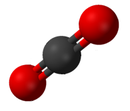 A compound is a pure chemical substance composed of more than one element. The properties of a compound bear little similarity to those of its elements.[43] The standard nomenclature of compounds is set by the International Union of Pure and Applied Chemistry (IUPAC). Organic compounds are named according to the organic nomenclature system.[44] Inorganic compoundsare named according to the inorganic nomenclature system.[45] In addition the Chemical Abstracts Service has devised a method to index chemical substances. In this scheme each chemical substance is identifiable by a number known as its CAS registry number.
A compound is a pure chemical substance composed of more than one element. The properties of a compound bear little similarity to those of its elements.[43] The standard nomenclature of compounds is set by the International Union of Pure and Applied Chemistry (IUPAC). Organic compounds are named according to the organic nomenclature system.[44] Inorganic compoundsare named according to the inorganic nomenclature system.[45] In addition the Chemical Abstracts Service has devised a method to index chemical substances. In this scheme each chemical substance is identifiable by a number known as its CAS registry number.Molecule
Main article: Molecule
A molecule is the smallest indivisible portion of a pure chemical substance that has its unique set of chemical properties, that is, its potential to undergo a certain set of chemical reactions with other substances. However, this definition only works well for substances that are composed of molecules, which is not true of many substances (see below). Molecules are typically a set of atoms bound together bycovalent bonds, such that the structure is electrically neutral and all valence electrons are paired with other electrons either in bonds or in lone pairs.
Thus, molecules exist as electrically neutral units, unlike ions. When this rule is broken, giving the "molecule" a charge, the result is sometimes named amolecular ion or a polyatomic ion. However, the discrete and separate nature of the molecular concept usually requires that molecular ions be present only in well-separated form, such as a directed beam in a vacuum in a mass spectrometer. Charged polyatomic collections residing in solids (for example, common sulfate or nitrate ions) are generally not considered "molecules" in chemistry.
The "inert" or noble gas elements (helium, neon, argon, krypton, xenon and radon) are composed of lone atoms as their smallest discrete unit, but the other isolated chemical elements consist of either molecules or networks of atoms bonded to each other in some way. Identifiable molecules compose familiar substances such as water, air, and many organic compounds like alcohol, sugar, gasoline, and the various pharmaceuticals.
However, not all substances or chemical compounds consist of discrete molecules, and indeed most of the solid substances that make up the solid crust, mantle, and core of the Earth are chemical compounds without molecules. These other types of substances, such as ionic compounds and network solids, are organized in such a way as to lack the existence of identifiable molecules per se. Instead, these substances are discussed in terms of formula units or unit cells as the smallest repeating structure within the substance. Examples of such substances are mineral salts (such as table salt), solids like carbon and diamond, metals, and familiar silica and silicate minerals such as quartz and granite.
One of the main characteristics of a molecule is its geometry often called its structure. While the structure of diatomic, triatomic or tetra atomic molecules may be trivial, (linear, angular pyramidal etc.) the structure of polyatomic molecules, that are constituted of more than six atoms (of several elements) can be crucial for its chemical nature.
Substance and mixture
  | |
  | |
  | |
| Examples of pure chemical substances. From left to right: the elements tin (Sn) and sulfur (S),diamond (an allotrope of carbon), sucrose(pure sugar), and sodium chloride (salt) andsodium bicarbonate (baking soda), which are both ionic compounds. |
A chemical substance is a kind of matter with a definite composition and set ofproperties.[46] A collection of substances is called a mixture. Examples of mixtures are air and alloys.[47]
Mole and amount of substance
Main article: Mole
The mole is a unit of measurement that denotes an amount of substance (also called chemical amount). The mole is defined as the number of atoms found in exactly 0.012 kilogram (or 12 grams) of carbon-12, where the carbon-12 atoms are unbound, at rest and in their ground state.[48] The number of entities per mole is known as the Avogadro constant, and is determined empirically to be approximately 6.022×1023 mol−1.[49] Molar concentration is the amount of a particular substance per volume of solution, and is commonly reported in moldm−3.[50]
Phase
Main article: Phase
In addition to the specific chemical properties that distinguish different chemical classifications, chemicals can exist in several phases. For the most part, the chemical classifications are independent of these bulk phase classifications; however, some more exotic phases are incompatible with certain chemical properties. A phase is a set of states of a chemical system that have similar bulk structural properties, over a range of conditions, such as pressure or temperature.
Physical properties, such as density and refractive index tend to fall within values characteristic of the phase. The phase of matter is defined by the phase transition, which is when energy put into or taken out of the system goes into rearranging the structure of the system, instead of changing the bulk conditions.
Sometimes the distinction between phases can be continuous instead of having a discrete boundary, in this case the matter is considered to be in a supercritical state. When three states meet based on the conditions, it is known as a triple point and since this is invariant, it is a convenient way to define a set of conditions.
The most familiar examples of phases are solids, liquids, and gases. Many substances exhibit multiple solid phases. For example, there are three phases of solid iron (alpha, gamma, and delta) that vary based on temperature and pressure. A principal difference between solid phases is the crystal structure, or arrangement, of the atoms. Another phase commonly encountered in the study of chemistry is the aqueous phase, which is the state of substances dissolved in aqueous solution(that is, in water).
Less familiar phases include plasmas, Bose–Einstein condensates and fermionic condensates and the paramagnetic andferromagnetic phases of magnetic materials. While most familiar phases deal with three-dimensional systems, it is also possible to define analogs in two-dimensional systems, which has received attention for its relevance to systems in biology.
Bonding
Main article: Chemical bond
Atoms sticking together in molecules or crystals are said to be bonded with one another. A chemical bond may be visualized as the multipole balance between the positive charges in the nuclei and the negative charges oscillating about them.[51] More than simple attraction and repulsion, the energies and distributions characterize the availability of an electron to bond to another atom.
A chemical bond can be a covalent bond, an ionic bond, a hydrogen bond or just because of Van der Waals force. Each of these kinds of bonds is ascribed to some potential. These potentials create the interactions which hold atoms together in molecules or crystals. In many simple compounds, valence bond theory, the Valence Shell Electron Pair Repulsion model (VSEPR), and the concept of oxidation number can be used to explain molecular structure and composition.
An ionic bond is formed when a metal loses one or more of its electrons, becoming a positively charged cation, and the electrons are then gained by the non-metal atom, becoming a negatively charged anion. The two oppositely charged ions attract one another, and the ionic bond is the electrostatic force of attraction between them. For example, sodium (Na), a metal, loses one electron to become an Na+ cation while chlorine (Cl), a non-metal, gains this electron to become Cl−. The ions are held together due to electrostatic attraction, and that compound sodium chloride (NaCl), or common table salt, is formed.
In a covalent bond, one or more pairs of valence electrons are shared by two atoms: the resulting electrically neutral group of bonded atoms is termed a molecule. Atoms will share valence electrons in such a way as to create a noble gas electron configuration (eight electrons in their outermost shell) for each atom. Atoms that tend to combine in such a way that they each have eight electrons in their valence shell are said to follow the octet rule. However, some elements like hydrogen and lithium need only two electrons in their outermost shell to attain this stable configuration; these atoms are said to follow the duet rule, and in this way they are reaching the electron configuration of the noble gas helium, which has two electrons in its outer shell.
Similarly, theories from classical physics can be used to predict many ionic structures. With more complicated compounds, such as metal complexes, valence bond theory is less applicable and alternative approaches, such as the molecular orbital theory, are generally used. See diagram on electronic orbitals.
Energy
Main article: Energy
In the context of chemistry, energy is an attribute of a substance as a consequence of itsatomic, molecular or aggregate structure. Since a chemical transformation is accompanied by a change in one or more of these kinds of structures, it is invariably accompanied by an increase or decrease of energy of the substances involved. Some energy is transferred between the surroundings and the reactants of the reaction in the form of heat or light; thus the products of a reaction may have more or less energy than the reactants.
A reaction is said to be exergonic if the final state is lower on the energy scale than the initial state; in the case ofendergonic reactions the situation is the reverse. A reaction is said to be exothermic if the reaction releases heat to the surroundings; in the case of endothermic reactions, the reaction absorbs heat from the surroundings.
Chemical reactions are invariably not possible unless the reactants surmount an energy barrier known as the activation energy. The speed of a chemical reaction (at given temperature T) is related to the activation energy E, by the Boltzmann's population factor  - that is the probability of a molecule to have energy greater than or equal to E at the given temperature T. This exponential dependence of a reaction rate on temperature is known as the Arrhenius equation. The activation energy necessary for a chemical reaction to occur can be in the form of heat, light, electricity or mechanical forcein the form of ultrasound.[52]
- that is the probability of a molecule to have energy greater than or equal to E at the given temperature T. This exponential dependence of a reaction rate on temperature is known as the Arrhenius equation. The activation energy necessary for a chemical reaction to occur can be in the form of heat, light, electricity or mechanical forcein the form of ultrasound.[52]
 - that is the probability of a molecule to have energy greater than or equal to E at the given temperature T. This exponential dependence of a reaction rate on temperature is known as the Arrhenius equation. The activation energy necessary for a chemical reaction to occur can be in the form of heat, light, electricity or mechanical forcein the form of ultrasound.[52]
- that is the probability of a molecule to have energy greater than or equal to E at the given temperature T. This exponential dependence of a reaction rate on temperature is known as the Arrhenius equation. The activation energy necessary for a chemical reaction to occur can be in the form of heat, light, electricity or mechanical forcein the form of ultrasound.[52]
A related concept free energy, which also incorporates entropy considerations, is a very useful means for predicting the feasibility of a reaction and determining the state of equilibrium of a chemical reaction, in chemical thermodynamics. A reaction is feasible only if the total change in the Gibbs free energy is negative,  ; if it is equal to zero the chemical reaction is said to be at equilibrium.
; if it is equal to zero the chemical reaction is said to be at equilibrium.
 ; if it is equal to zero the chemical reaction is said to be at equilibrium.
; if it is equal to zero the chemical reaction is said to be at equilibrium.
There exist only limited possible states of energy for electrons, atoms and molecules. These are determined by the rules ofquantum mechanics, which require quantization of energy of a bound system. The atoms/molecules in a higher energy state are said to be excited. The molecules/atoms of substance in an excited energy state are often much more reactive; that is, more amenable to chemical reactions.
The phase of a substance is invariably determined by its energy and the energy of its surroundings. When theintermolecular forces of a substance are such that the energy of the surroundings is not sufficient to overcome them, it occurs in a more ordered phase like liquid or solid as is the case with water (H2O); a liquid at room temperature because its molecules are bound by hydrogen bonds.[53] Whereas hydrogen sulfide (H2S) is a gas at room temperature and standard pressure, as its molecules are bound by weaker dipole-dipole interactions.
The transfer of energy from one chemical substance to another depends on the size of energy quanta emitted from one substance. However, heat energy is often transferred more easily from almost any substance to another because thephonons responsible for vibrational and rotational energy levels in a substance have much less energy than photonsinvoked for the electronic energy transfer. Thus, because vibrational and rotational energy levels are more closely spaced than electronic energy levels, heat is more easily transferred between substances relative to light or other forms of electronic energy. For example, ultraviolet electromagnetic radiation is not transferred with as much efficacy from one substance to another as thermal or electrical energy.
The existence of characteristic energy levels for different chemical substances is useful for their identification by the analysis of spectral lines. Different kinds of spectra are often used in chemical spectroscopy, e.g. IR, microwave, NMR,ESR, etc. Spectroscopy is also used to identify the composition of remote objects - like stars and distant galaxies - by analyzing their radiation spectra.
The term chemical energy is often used to indicate the potential of a chemical substance to undergo a transformation through a chemical reaction or to transform other chemical substances.
Reaction
Main article: Chemical reaction
When a chemical substance is transformed as a result of its interaction with another substance or with energy, a chemical reaction is said to have occurred. A chemical reaction is therefore a concept related to the "reaction" of a substance when it comes in close contact with another, whether as a mixture or a solution; exposure to some form of energy, or both. It results in some energy exchange between the constituents of the reaction as well as with the system environment, which may be designed vessels—often laboratory glassware.
Chemical reactions can result in the formation or dissociation of molecules, that is, molecules breaking apart to form two or more smaller molecules, or rearrangement of atoms within or across molecules. Chemical reactions usually involve the making or breaking of chemical bonds. Oxidation, reduction, dissociation, acid-baseneutralization and molecular rearrangement are some of the commonly used kinds of chemical reactions.
A chemical reaction can be symbolically depicted through a chemical equation. While in a non-nuclear chemical reaction the number and kind of atoms on both sides of the equation are equal, for a nuclear reaction this holds true only for the nuclear particles viz. protons and neutrons.[54]
The sequence of steps in which the reorganization of chemical bonds may be taking place in the course of a chemical reaction is called its mechanism. A chemical reaction can be envisioned to take place in a number of steps, each of which may have a different speed. Many reaction intermediates with variable stability can thus be envisaged during the course of a reaction. Reaction mechanisms are proposed to explain the kinetics and the relative product mix of a reaction. Manyphysical chemists specialize in exploring and proposing the mechanisms of various chemical reactions. Several empirical rules, like the Woodward–Hoffmann rules often come in handy while proposing a mechanism for a chemical reaction.
According to the IUPAC gold book, a chemical reaction is "a process that results in the interconversion of chemical species."[55] Accordingly, a chemical reaction may be an elementary reaction or a stepwise reaction. An additional caveat is made, in that this definition includes cases where the interconversion of conformers is experimentally observable. Such detectable chemical reactions normally involve sets of molecular entities as indicated by this definition, but it is often conceptually convenient to use the term also for changes involving single molecular entities (i.e. 'microscopic chemical events').
Ions and salts
Main article: Ion
An ion is a charged species, an atom or a molecule, that has lost or gained one or more electrons. When an atom loses an electron and thus has more protons than electrons, the atom is a positively charged ion or cation. When an atom gains an electron and thus has more electrons than protons, the atom is a negatively charged ion or anion. Cations and anions can form a crystalline lattice of neutral salts, such as the Na+ and Cl− ions formingsodium chloride, or NaCl. Examples of polyatomic ions that do not split up during acid-base reactions are hydroxide (OH−) and phosphate (PO43−).
Plasma is composed of gaseous matter that has been completely ionized, usually through high temperature.
Acidity and basicity
Main article: Acid–base reaction
A substance can often be classified as an acid or a base. There are several different theories which explain acid-base behavior. The simplest is Arrhenius theory, which states than an acid is a substance that produceshydronium ions when it is dissolved in water, and a base is one that produces hydroxide ionswhen dissolved in water. According to Brønsted–Lowry acid–base theory, acids are substances that donate a positive hydrogen ion to another substance in a chemical reaction; by extension, a base is the substance which receives that hydrogen ion.
A third common theory is Lewis acid-base theory, which is based on the formation of new chemical bonds. Lewis theory explains that an acid is a substance which is capable of accepting a pair of electrons from another substance during the process of bond formation, while a base is a substance which can provide a pair of electrons to form a new bond. According to this theory, the crucial things being exchanged are charges.[56][unreliable source?] There are several other ways in which a substance may be classified as an acid or a base, as is evident in the history of this concept.[57]
Acid strength is commonly measured by two methods. One measurement, based on the Arrhenius definition of acidity, ispH, which is a measurement of the hydronium ion concentration in a solution, as expressed on a negative logarithmic scale. Thus, solutions that have a low pH have a high hydronium ion concentration, and can be said to be more acidic. The other measurement, based on the Brønsted–Lowry definition, is the acid dissociation constant (Ka), which measures the relative ability of a substance to act as an acid under the Brønsted–Lowry definition of an acid. That is, substances with a higher Kaare more likely to donate hydrogen ions in chemical reactions than those with lower Ka values.
Redox
Main article: Redox
Redox (reduction-oxidation) reactions include all chemical reactions in which atoms have their oxidation state changed by either gaining electrons (reduction) or losing electrons (oxidation). Substances that have the ability to oxidize other substances are said to be oxidative and are known as oxidizing agents, oxidants or oxidizers. An oxidant removes electrons from another substance. Similarly, substances that have the ability to reduce other substances are said to be reductive and are known as reducing agents, reductants, or reducers.
A reductant transfers electrons to another substance, and is thus oxidized itself. And because it "donates" electrons it is also called an electron donor. Oxidation and reduction properly refer to a change in oxidation number—the actual transfer of electrons may never occur. Thus, oxidation is better defined as an increase in oxidation number, and reduction as a decrease in oxidation number.
Equilibrium
Main article: Chemical equilibrium
Although the concept of equilibrium is widely used across sciences, in the context of chemistry, it arises whenever a number of different states of the chemical composition are possible, as for example, in a mixture of several chemical compounds that can react with one another, or when a substance can be present in more than one kind of phase.
A system of chemical substances at equilibrium, even though having an unchanging composition, is most often not static; molecules of the substances continue to react with one another thus giving rise to a dynamic equilibrium. Thus the concept describes the state in which the parameters such as chemical composition remain unchanged over time.
Chemical laws
Main article: Chemical law
Chemical reactions are governed by certain laws, which have become fundamental concepts in chemistry. Some of them are:
- Avogadro's law
- Beer–Lambert law
- Boyle's law (1662, relating pressure and volume)
- Charles's law (1787, relating volume and temperature)
- Fick's laws of diffusion
- Gay-Lussac's law (1809, relating pressure and temperature)
- Le Chatelier's principle
- Henry's law
- Hess's law
- Law of conservation of energy leads to the important concepts of equilibrium, thermodynamics, and kinetics.
- Law of conservation of mass continues to be conserved in isolated systems, even in modern physics. However, special relativity shows that due to mass–energy equivalence, whenever non-material "energy" (heat, light, kinetic energy) is removed from a non-isolated system, some mass will be lost with it. High energy losses result in loss of weighable amounts of mass, an important topic in nuclear chemistry.
- Law of definite composition, although in many systems (notably biomacromolecules and minerals) the ratios tend to require large numbers, and are frequently represented as a fraction.
- Law of multiple proportions
- Raoult's law
Practice
Subdisciplines
| This article relies largely or entirely upon a single source. (September 2014) |
Chemistry is typically divided into several major sub-disciplines. There are also several main cross-disciplinary and more specialized fields of chemistry.[58]
- Analytical chemistry is the analysis of material samples to gain an understanding of their chemical composition andstructure. Analytical chemistry incorporates standardized experimental methods in chemistry. These methods may be used in all subdisciplines of chemistry, excluding purely theoretical chemistry.
- Biochemistry is the study of the chemicals, chemical reactions and chemical interactions that take place in livingorganisms. Biochemistry and organic chemistry are closely related, as in medicinal chemistry or neurochemistry. Biochemistry is also associated with molecular biology and genetics.
- Inorganic chemistry is the study of the properties and reactions of inorganic compounds. The distinction between organic and inorganic disciplines is not absolute and there is much overlap, most importantly in the sub-discipline oforganometallic chemistry.
- Materials chemistry is the preparation, characterization, and understanding of substances with a useful function. The field is a new breadth of study in graduate programs, and it integrates elements from all classical areas of chemistry with a focus on fundamental issues that are unique to materials. Primary systems of study include the chemistry of condensed phases (solids, liquids, polymers) and interfaces between different phases.
- Neurochemistry is the study of neurochemicals; including transmitters, peptides, proteins, lipids, sugars, and nucleic acids; their interactions, and the roles they play in forming, maintaining, and modifying the nervous system.
- Nuclear chemistry is the study of how subatomic particles come together and make nuclei. Modern Transmutation is a large component of nuclear chemistry, and the table of nuclides is an important result and tool for this field.
- Organic chemistry is the study of the structure, properties, composition, mechanisms, and reactions of organic compounds. An organic compound is defined as any compound based on a carbon skeleton.
- Physical chemistry is the study of the physical and fundamental basis of chemical systems and processes. In particular, the energetics and dynamics of such systems and processes are of interest to physical chemists. Important areas of study include chemical thermodynamics, chemical kinetics, electrochemistry, statistical mechanics, spectroscopy, and more recently, astrochemistry.[59] Physical chemistry has large overlap with molecular physics. Physical chemistry involves the use of infinitesimal calculus in deriving equations. It is usually associated with quantum chemistry and theoretical chemistry. Physical chemistry is a distinct discipline from chemical physics, but again, there is very strong overlap.
- Theoretical chemistry is the study of chemistry via fundamental theoretical reasoning (usually within mathematics orphysics). In particular the application of quantum mechanics to chemistry is called quantum chemistry. Since the end of the Second World War, the development of computers has allowed a systematic development of computational chemistry, which is the art of developing and applying computer programs for solving chemical problems. Theoretical chemistry has large overlap with (theoretical and experimental) condensed matter physics and molecular physics.
Other disciplines within chemistry are traditionally grouped by the type of matter being studied or the kind of study. These include inorganic chemistry, the study of inorganic matter; organic chemistry, the study of organic (carbon-based) matter;biochemistry, the study of substances found in biological organisms; physical chemistry, the study of chemical processes using physical concepts such as thermodynamics and quantum mechanics; and analytical chemistry, the analysis of material samples to gain an understanding of their chemical composition and structure. Many more specialized disciplines have emerged in recent years, e.g. neurochemistry the chemical study of the nervous system (see subdisciplines).
Other fields include agrochemistry, astrochemistry (and cosmochemistry), atmospheric chemistry, chemical engineering,chemical biology, chemo-informatics, electrochemistry, environmental chemistry, femtochemistry, flavor chemistry, flow chemistry, geochemistry, green chemistry, histochemistry, history of chemistry, hydrogenation chemistry, immunochemistry,marine chemistry, materials science, mathematical chemistry, mechanochemistry, medicinal chemistry, molecular biology,molecular mechanics, nanotechnology, natural product chemistry, oenology, organometallic chemistry, petrochemistry,pharmacology, photochemistry, physical organic chemistry, phytochemistry, polymer chemistry, radiochemistry, solid-state chemistry, sonochemistry, supramolecular chemistry, surface chemistry, synthetic chemistry, thermochemistry, and many others.
Chemical industry
Main article: Chemical industry
The chemical industry represents an important economic activity worldwide. The global top 50 chemical producers in 2013 had sales of US$980.5 billion with a profit margin of 10.3%.[60]
Sign up here with your email

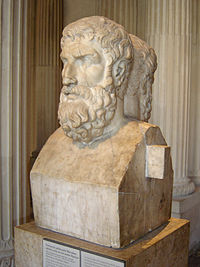

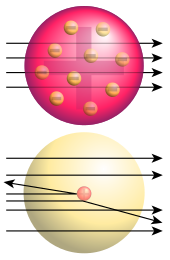
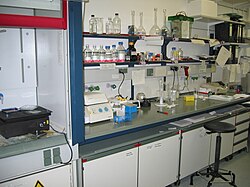




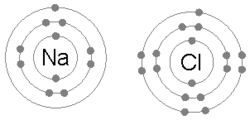


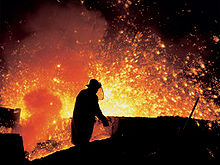


ConversionConversion EmoticonEmoticon